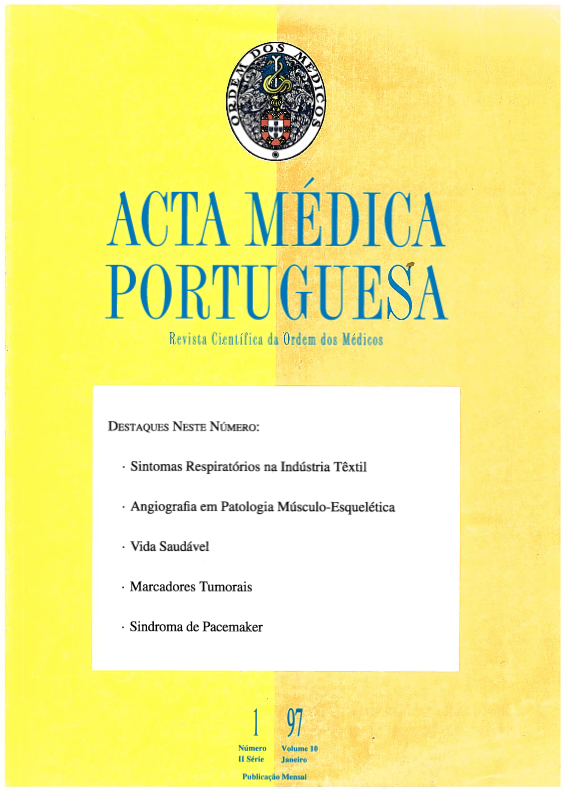Sintomas respiratórios na indústria têxtil. Prevalência no Vale do Ave.
DOI:
https://doi.org/10.20344/amp.2378Resumo
Some workers in the textile industry have respiratory symptoms related to their occupation. This study is aimed at evaluating the frequency of respiratory symptoms in textile industries in the North of Portugal. We evaluated 3529 workers from 20 factories (19 deal with synthetic fibres and cotton and the other deals with sisal.) Among the workers, there were 34.5% with respiratory symptoms - 24,5% referred nasal symptoms, 22,6% with bronchial symptoms and 12,6% associated both. The workers who dealt with cotton presented a higher frequency of bronchial symptoms (25,0%) than the ones dealing with synthetic fibres (12,7% p < 0,000001). The same was noticed among the workers in the opening and spinning areas, who showed a higher frequency of bronchial symptoms (28,3%) than the ones in weaving areas (12,7% p < 0,000001). We did not find any differences concerning the frequency of symptoms among the workers handling both natural fibres (cotton and sisal). Individually all the symptoms were more frequent among the workers handling natural fibres. The most frequent symptom depended on the fibre. Cough was more frequently mentioned among the workers handling synthetic fibres (9.6%) and cotton (15.7%). Among the workers who handle sisal, dyspnea was the most frequently mentioned (16.9%). Productive cough was the most frequent association (7.2% sisal; 2.8% synthetic; 8.0% cotton), and the association between dyspnea and wheezing the least mentioned (6.4% sisal; 0.5% synthetic; 5.9% cotton). The workers with bronchial symptoms (synthetic fibre and cotton) have more years of exposure and greater smoking habits. In a covariance adjusted for age and smoking habits, the workers with bronchial symptoms, exposed to cotton have more years of exposure.Downloads
Downloads
Como Citar
Edição
Secção
Licença
Todos os artigos publicados na AMP são de acesso aberto e cumprem os requisitos das agências de financiamento ou instituições académicas. Relativamente à utilização por terceiros a AMP rege-se pelos termos da licença Creative Commons ‘Atribuição – Uso Não-Comercial – (CC-BY-NC)’.
É da responsabilidade do autor obter permissão para reproduzir figuras, tabelas, etc., de outras publicações. Após a aceitação de um artigo, os autores serão convidados a preencher uma “Declaração de Responsabilidade Autoral e Partilha de Direitos de Autor “(http://www.actamedicaportuguesa.com/info/AMP-NormasPublicacao.pdf) e a “Declaração de Potenciais Conflitos de Interesse” (http://www.icmje.org/conflicts-of-interest) do ICMJE. Será enviado um e-mail ao autor correspondente, confirmando a receção do manuscrito.
Após a publicação, os autores ficam autorizados a disponibilizar os seus artigos em repositórios das suas instituições de origem, desde que mencionem sempre onde foram publicados e de acordo com a licença Creative Commons









